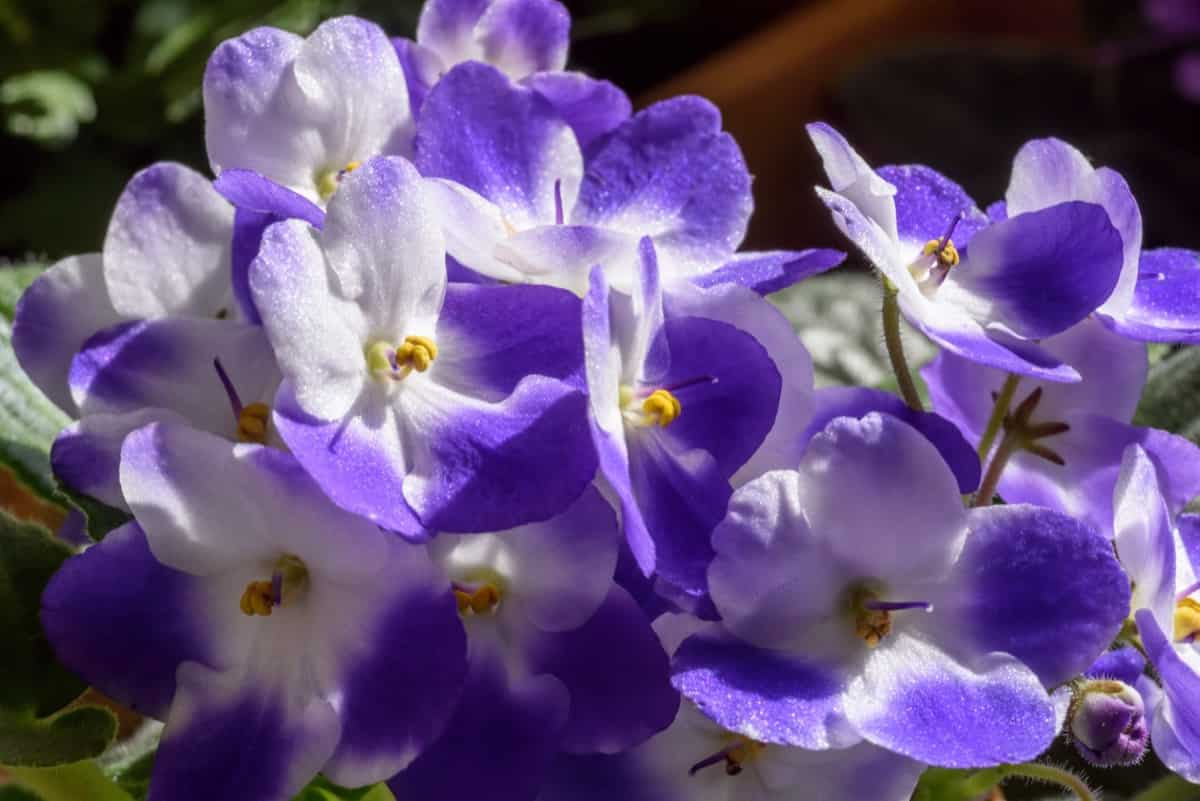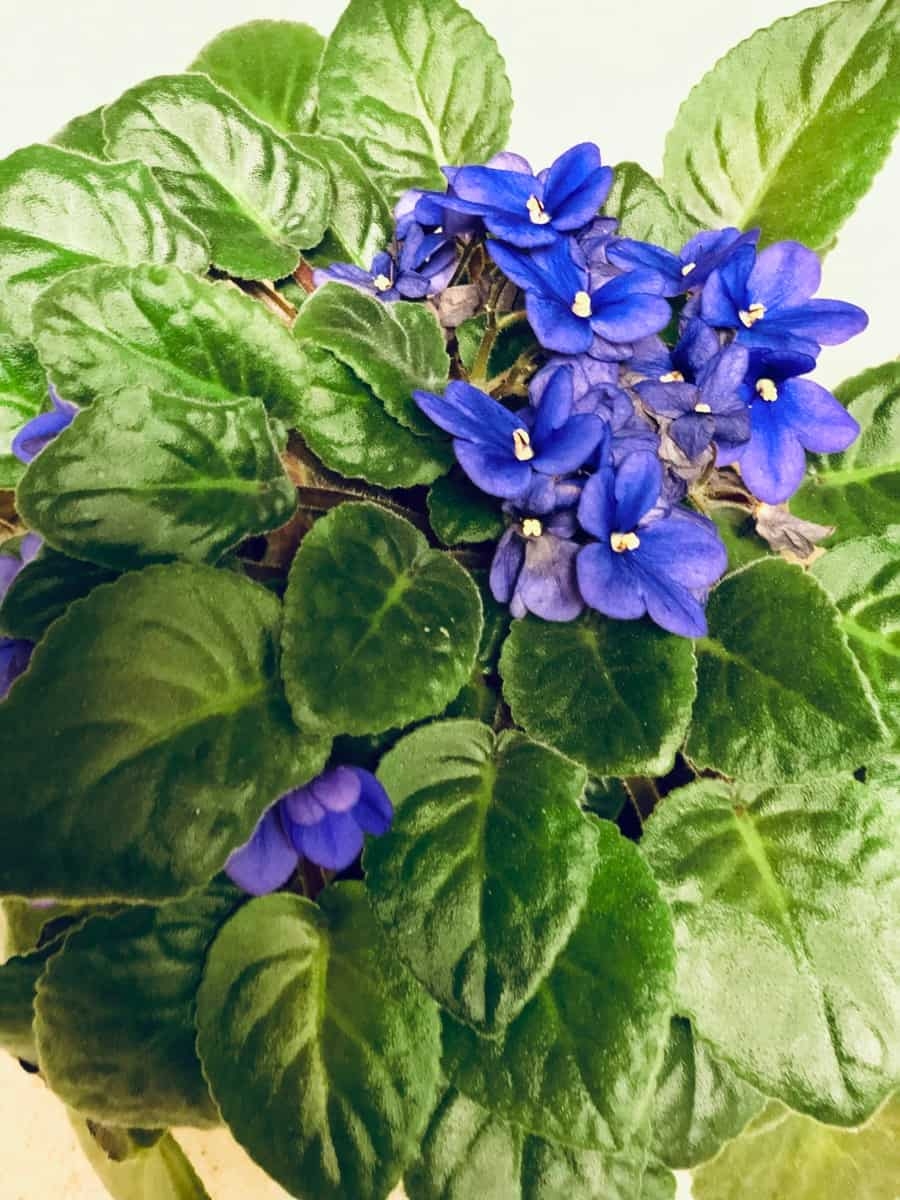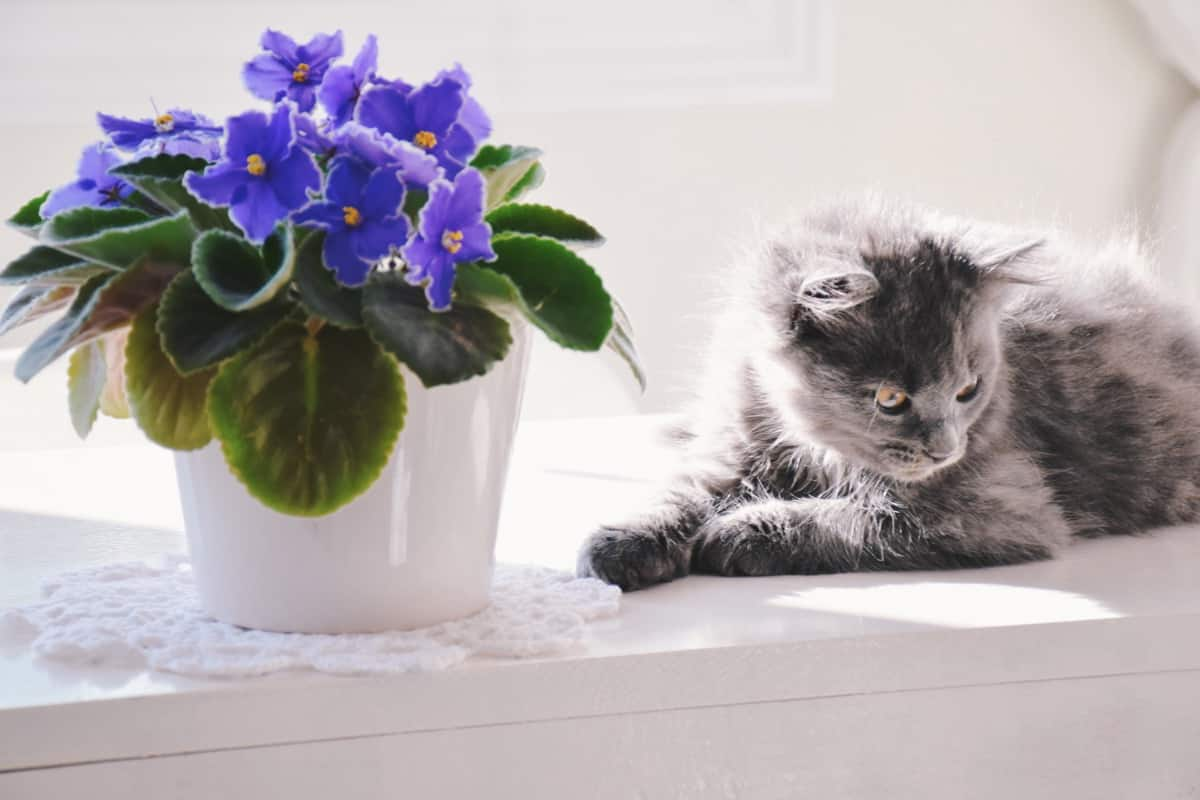African Violets are treasured houseplants that can flourish for many years with proper care. They are favored for their compact growth habit and vibrant flowers, enhancing any indoor garden’s aesthetics. However, even the most well-tended African Violets sometimes require repotting for healthy, continuous growth. This is a process that, when mismanaged, can lead to common issues like African violet dying after repotting or African violet transplant shock.

In this detailed article, we will discuss identifying the need for repotting your African Violets by paying close attention to ten significant signs. Moreover, we will address certain common concerns related to repotting, such as the suitability of repotting African violets when they bloom and the complex task of repotting them with necks.
How to Tell if African Violets Need Repotting
Understanding the Ten Signs of Repotting Need
- Roots Filling the Pot: If you notice the roots of the African Violet filling up the pot or growing out through the drainage holes, it’s a clear indication that the plant is outgrowing its current pot and requires a larger one to thrive. The absence of adequate space can lead to root rot, and it’s essential to understand how to save an African Violet from this issue.
- Drooping Leaves: Drooping or wilting leaves often suggest that the African Violet is not receiving adequate nutrients or water. Transfer the plant to a new pot with fresh soil for a fast fix to revive its well-being.
- Change in Leaf Color: Leaves turning yellow or brown can indicate several problems, one being pot-bound roots that cannot draw up nutrients effectively. Repotting can rectify this situation.
- Slow Growth or Reduced Blooming: African Violets are known for their vibrant flowers. If there’s a noticeable slowdown in the plant’s growth that has stopped blooming altogether, it’s a sign that it might benefit from repotting.
- Long, Bare Stems or Necks: African Violets might develop bare stems or “necks.” Knowing how to tackle repotting African violets with necks is crucial, as they require careful handling.
- Watering Difficulties: The plant is root-bound if water runs straight out of the pot or the potting mix dries out too quickly. In such cases, repotting is necessary.
- Top-Heavy Plants: If the African Violet becomes top-heavy and topples over, it indicates that it has outgrown its pot and needs repotting.
- Poor Soil Condition: Over time, the potting mix loses its nutrients and becomes compacted, which impedes the plant’s growth. Refreshing the soil by repotting can restore the African Violet’s vitality.
- Pest Infestation or Disease: Persistent pest problems or diseases might require you to repot the plant in a fresh, sterilized potting mix to give it a fresh start.
- Visible Signs of Root or Crown Rot: African violet crown rot or root rot is a severe condition that needs immediate attention. Repotting is usually the best solution to save the plant from further damage.
In case you missed it: How to Grow and Care for Wild Violets: A Comprehensive Step-By-Step Guide

Dealing with Repotting Concerns
Understanding when to report is half the battle. The other half involves knowing how to manage potential problems such as African violet dying after repotting or a transplant shock. These issues may arise for various reasons, including improper handling during repotting, repotting at the wrong time, or using an unsuitable potting mix. So, can you repot African violets when they are blooming?
It’s recommended to avoid repotting when the plant is in full bloom, as the process could stress the plant and potentially damage the flowers. However, if the plant’s health is at risk, repotting should precede the blooming phase. Repotting African violets with necks requires particular care, as the bare stem or neck can be sensitive. The neck should be buried within the fresh potting mix in the new pot to encourage the development of new roots and to prevent any potential damage to the plant structure.
African violet transplant shock is another common issue associated with repotting. Transplant shock can manifest as wilting, yellowing leaves, or a general slowdown in the plant’s growth. To prevent transplant shock, aim for the smoothest transition possible. Gently take out the plant from its old pot, loosen the roots carefully, and put it in the new pot with appropriate potting mix.
Avoid drastic changes in the plant’s environment post-repotting and ensure it receives adequate water and light. Saving an African Violet from root rot requires swift action. Root rot, often caused by overwatering or poor drainage, can be deadly for the plant. Remove the plant from the pot and cut off the affected roots if you notice the roots turning mushy and dark.
Treat the healthy roots with a suitable fungicide before repotting the plant in a fresh, well-draining potting mix. African violet crown rot is a similar condition that affects the base of the plant. It’s often caused by excessive moisture in the crown area. Crown rot can cause the leaves to turn yellow, wilt, and eventually fall off. If you notice these signs, it’s crucial to act quickly.
Proper Aftercare Following Repotting
Proper aftercare following repotting is a crucial step that often goes overlooked. Once you’ve transplanted your African Violet, place it in a quiet, well-lit spot away from direct sunlight. Over the next few days, monitor the plant for signs of stress, such as wilting or yellowing leaves. Ensure the plant receives adequate water – overwatering can lead to root rot.
Also, refrain from feeding the plant any fertilizer immediately after repotting. Wait a few weeks until the plant has adjusted to its new pot and potting mix. Regular monitoring and correct aftercare can help mitigate issues like African violet dying after repotting or transplant shock, contributing significantly to the successful repotting of your African Violet.
In case you missed it: How to Grow Round Violet/Black Brinjal at Home: A Step-By-Step Process

Conclusion
Understanding the signs of when an African Violet needs repotting is crucial for maintaining its overall health. The timing and the procedure of repotting are equally important to prevent potential issues such as transplant shock or the plant dying after repotting. By paying close attention to the plant’s growth, leaf color, blooming pattern, and the condition of its roots, you can ensure that your African Violet continues to grow and bloom beautifully for years.
- Ultimate Guide to Ossabaw Island Hog: Breeding, Raising, Diet, and Care
- Ultimate Guide to Juliana Pig: Raising Facts, Size, Diet, Care, and Lifespan
- Raising Lleyn Sheep: Disadvantages, Price, Uses, Characteristics, and Care
- Ultimate Guide to Meishan Pig: Breed Facts, Breeding, Raising, and Care
- Ultimate Guide to Teacup Pigs: Raising, Diet, Lifespan, Cost, and Care
- Guide to Raising Poll Dorset Sheep: Facts, Profile, Characteristics, Uses, and Care
- Ultimate Guide to Bighorn Sheep: Characteristics, Diet, Lifespan, Breeding, and Lifecycle
- Ultimate Guide to Raising Katahdin Sheep: Farming Facts, Breed Profile, Uses, and Care
- Ultimate Guide to Raising Oreo Cows: Belted Galloways Farming Facts, Profile, Uses, and Care